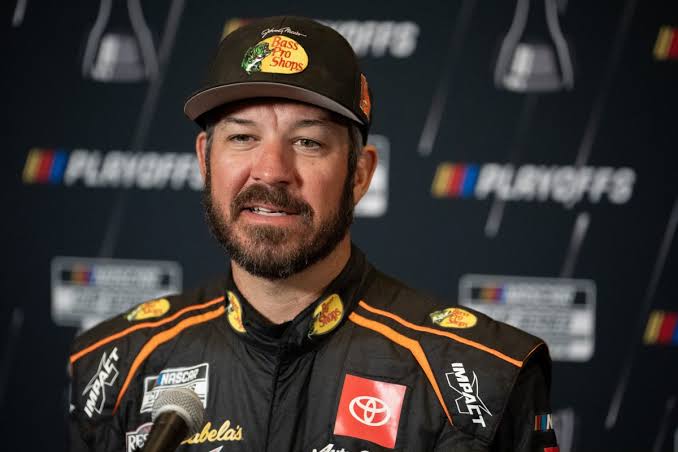Martin Truex Jr., one of NASCAR’s top talents and a road course ace, left Watkins Glen International in frustration after a race weekend that failed to meet his expectations. Coming into the event, Truex was one of the favorites to win. He had been enjoying a stellar season, sitting high in the standings and securing multiple wins along the way. With his strong track record on road courses, including victories at Watkins Glen in the past, many expected him to be a major contender for the win. But as the race weekend progressed, it became clear that this wasn’t going to be his day.
The weekend started with high hopes for the driver of the No. 19 Toyota Camry, but things quickly went off track. During practice, Truex struggled with handling issues that made his car difficult to control, particularly in the corners. Watkins Glen is a road course that demands precision and balance from both driver and car, with its tricky turns and high-speed straights requiring perfect execution. Unfortunately, Truex’s car simply didn’t have the performance needed, and it became clear that his team would need to make adjustments.
Qualifying provided little relief. Despite the team’s efforts to improve the car’s setup, Truex was only able to secure a mid-pack starting position. For a driver of his caliber, starting from the middle of the field is less than ideal, especially on a road course where passing opportunities are often limited. His placement meant that he would have to navigate heavy traffic and hope for strategy or luck to help him climb through the field.
As race day arrived, the situation didn’t improve. From the moment the green flag dropped, Truex seemed to be fighting an uphill battle. The car’s handling issues persisted, particularly in the corners where the car didn’t have the grip or speed to keep pace with the leaders. This left Truex struggling just to maintain his position, let alone move forward. He found himself caught in traffic, and while other drivers were making bold moves to climb through the pack, Truex’s car simply didn’t have the power or responsiveness to make those same moves. He spent much of the race locked in the midfield, unable to break into the top tier of competitors.
What made the day even more frustrating was the lack of improvement despite the team’s attempts to fix the issues. Throughout the race, Truex and his crew worked to make adjustments during pit stops. They tried everything from changing tire pressures to making minor tweaks in the hopes of finding a solution that would unlock the car’s potential. But each adjustment seemed to offer little relief. No matter what they tried, the No. 19 car continued to struggle, and Truex’s frustrations became more evident as the race wore on.
One of the critical moments of the race came down to pit strategy, an area where Truex’s team usually excels. In NASCAR, timing your pit stops perfectly can often make or break your race, especially on road courses. However, this time, the strategy just didn’t play out in their favor. While some teams were able to take advantage of well-timed pit stops to gain track position, Truex found himself stuck in the middle of the pack, unable to capitalize on the timing of his stops. This left him frustrated and without a clear path forward, as he watched others around him make gains that he couldn’t match.
As the laps ticked down, it became clear that Truex was not going to be a factor in the race. The handling issues that had plagued him all weekend persisted, and the team’s best efforts to turn things around fell short. Instead of competing for the win, Truex found himself struggling just to stay in the top 20. By the time the checkered flag waved, Truex had finished in a disappointing 23rd place, far from where he had hoped to be when the weekend began.
So, what went wrong for Martin Truex Jr. at Watkins Glen? The answer seems to be a combination of factors. The primary issue was the car’s handling, which was off from the start. On a road course like Watkins Glen, a car that can’t handle well in the corners is at a severe disadvantage, and Truex simply didn’t have the speed or control to make up for that. The team’s pit strategy, which usually plays to his advantage, also failed to deliver the track position he needed. Instead of gaining spots through well-timed stops, Truex was left in the same place or even further back after each pit cycle. Finally, the competition was fierce, with other drivers taking advantage of the situation and making bold moves while Truex was stuck in the midfield.
Despite his frustration, this race is likely just a blip in an otherwise strong season for Truex. He’s proven time and again that he has the talent and experience to overcome setbacks, and one off weekend won’t define his year. Watkins Glen may have been a race to forget, but Truex and his team will undoubtedly regroup, analyze what went wrong, and come back stronger for the races ahead. For now, the NASCAR star will put this frustrating weekend behind him, knowing that better days are just around the corner.




